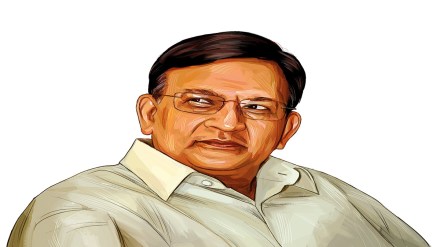Pratyush Sinha may have retired from civil services in 2006 and ended his term as the Chief Vigilance Officer (CVC) in 2010, but the 1969-batch Indian Administrative Service (IAS) officer still continues to put in a hectic work day, all of which is pro-bono, even now.
The 79-year-old’s already considerable workload is set to increase as he will head the six-member committee set up by the Securities and Exchange Board of India (SEBI) to review the provisions related to conflict of interest, disclosures of property, investments, liabilities, and related matters for its board members and officials.
Post his CVC stint, Sinha has been chairing one committee after another, trouble shooting for the government, and in the process delivering actionable measures. An officer with an impeccable record of integrity and probity in public life, dealing with matters of public policy with an aim to root out corruption comes naturally to him. His colleagues in the civil service and senior ministers across political parties, vouch for his deep understanding of bureaucracy, policy frameworks, and the mechanisms by which corruption embeds itself in governance. Therefore, SEBI Chairman Tuhin Kanta Pandey could not have chosen a better candidate to lead this high-stakes initiative.
As CVC, Sinha handled several corruption cases but the high mark was his handling of the 2G spectrum scam, which set a gold standard for administrative accountability. Prior to that he served as secretary (personnel) in the ministry of personnel, public grievances and pensions.
After demitting the office of CVC in 2010, Sinha hardly had time to relax as he continued to contribute to governance by chairing committees on diverse issues, from coal block auctions, developing a coal index for India, investigating the irregularities in the controversial Antrix-Devas deal, and the Prabhu committee on energy, which redrafted the tender guidelines for the ultra mega power projects. In fact, Sinha continues to be on the Air India asset holding committee, whose task is to monetise the immovable assets of the former state-owned airline to retire the debts which have been parked in a special purpose vehicle.
The SEBI committee, which has been constituted amid scrutiny following allegations of conflict of interest against former chairperson Madhabi Puri Buch in the Hindenburg-Adani investigation, has been tasked with reviewing existing policies, identifying gaps, and recommending a robust framework for recusal, disclosures, and public complaint mechanisms. The panel is expected to submit its report within three months.
Though as CVC from 2006 to 2010, Sinha confronted some of the most notorious corruption scandals, the spectrum scam became a litmus test for his resolve. As is known, this case involved irregularities in the allocation of 2G spectrum licences in 2008 under the then telecom minister A Raja. In March 2009, Sinha had remarked that the department of telecommunications (DoT) had manipulated the “first-come-first-serve” allocation process, which he described as “completely subjective and subject to serious manipulation”.
His decisive action in directing the Central Bureau of Investigation (CBI) to probe the irregularities after complaints were registered, set the stage for a broader investigation. Sinha’s preliminary inquiry uncovered procedural violations, prompting a CVC report to the DoT in early 2009 demanding accountability.
Though jurisdictional limits prevented direct action against Raja, his efforts catalysed the CBI’s FIR in October 2009 and subsequent raids, contributing to Raja’s resignation in 2010 and the Supreme Court’s cancellation of 122 licences in 2012. Facing resistance from DoT officials, Sinha later alleged in 2011 that non-cooperation had delayed his probe, yet his groundwork ensured the scam’s exposure.
Sinha’s vigilance extended beyond telecommunications. In 2017, he chaired a coal ministry committee to assess compensation for coal blocks taken over post the 2014 Supreme Court ruling that cancelled 204 allocations due to the coal scam. This scam, involved alleged irregularities in coal block allocations worth Rs 1.86 lakh crore as per the report of the Comptroller and Auditor General (CAG). His work here also culminated in developing a coal index for the country, which the government uses to this day in matters related to coal. He also led an inquiry into delays in the tender process for Mumbai’s Elphinstone Road station bridge.
In 2010, Sinha had made apt observations on the Indian bureaucracy. He said that 20% of the civil servants are honest, while 30% are absolutely corrupt. The balance 50% are observers – they closely observe the fate of the corrupt and if they see there’s no action against them, the chances of them also slipping into corruption is high.
In this context, SEBI’s choice of Sinha reflects a strategic alignment with his expertise. Throughout his career, Sinha has consistently demonstrated a rare blend of administrative acumen and ethical rigour. His leadership of the SEBI committee, therefore promises a framework that could redefine transparency in the financial regulatory landscape.
